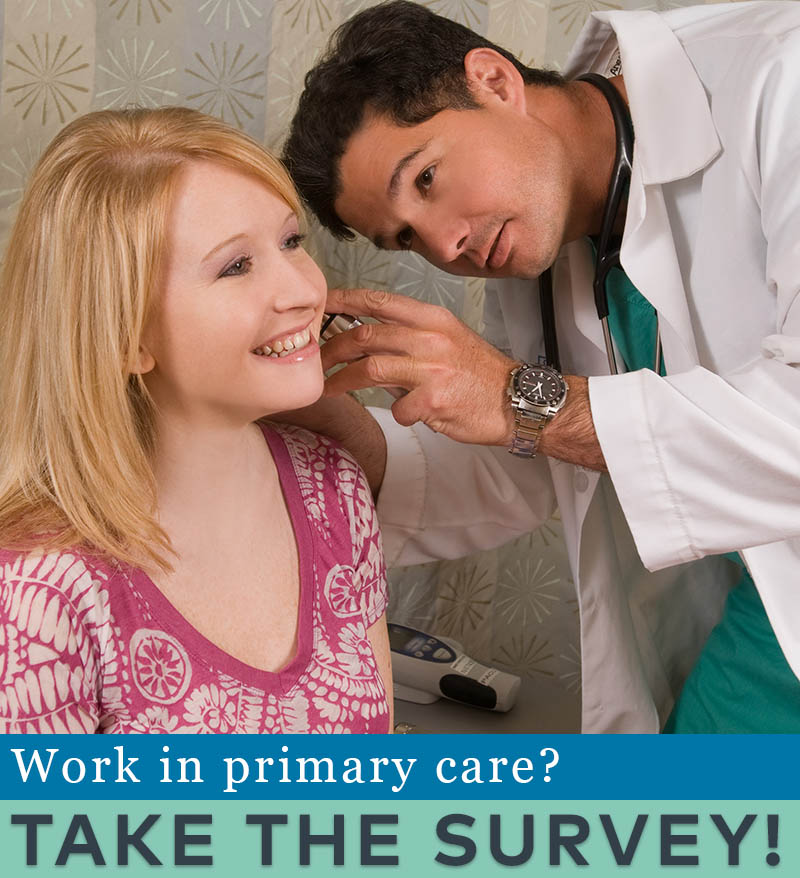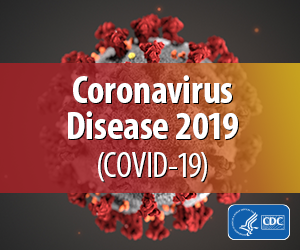Check back weekly for the latest survey results and updates.
For last week's data, see Week 9 Results.
Who replied to the survey in Week 10?
The week 10 sample was much smaller (736) than last week’s sample and of relatively different make-up. Breakdown by specialty returned to usual trends from earlier weeks of the survey, with family medicine representing the majority (67%), followed by internal medicine (16%), pediatrics (7%), geriatrics (4%), and other (7%). A much smaller percentage of respondents (3%) work in direct primary care or membership-based practice, compared to last week’s sample (27%). About a quarter work in a rural setting and 18% at a community health center. Forty percent practice in a setting with 10 or more clinicians. Responses came from 49 states, Washington, D.C., and the Virgin Islands, though only three states—Texas, Oregon, and Virginia—had 50 or more responses.
Responses to week 10 of the survey were collected May 15-18, 2020. Total responses: 736.
Results at a glance
More than half (55%) of responding clinicians fear they are unprepared for the next wave of the pandemic. The factors contributing to this fear include the 76% of clinicians who say they are under "severe" or "near-severe" stress; the 51% who say they continue to have no or severely limited access to testing; the 59% who say they continue to have no PPE; the 84% who say they have patients who struggle with digital health platforms; and the 20% who say they have patients who experience significant obstacles to adoption of telehealth.
Many clinicians are feeling unequipped to comment on new payment models, and most just want revenue—period. Over a third of surveyed respondents marked “N/A—outside my knowledge” when asked about their interest in transitioning to forms of per-member per-month capitated payments (36% said this about the option “Half PMPMP, half fee-for-service”; 37% said it about "Majority risk-adjusted PMPM”). Yet, at a high-level, the concept of predictable payments still earned the most votes among respondents: 30% marked “yes!” to the option of “predictable payments to support care in exchange for level of professional care determined by minimal set of essential measures.” Only “payment of any kind at this point” surpassed it with 34% of clinicians marking “yes!”
Management of chronic illness is also suffering. Only 12% of clinicians say that routine check-ins with cancer survivors are happening as usual. And a majority report that follow-up for lung disease, hypertension, or diabetes is happening “very little” (58%) or “not at all” (2%). Instead, the most common care being performed as usual is the evaluation of new symptoms or acute injuries/accidents.
Preventive care is largely not happening. Only 5% of respondents say that routine cancer screenings are happening as usual; 28% say they’re not happening at all. Vaccinations are similarly down: Only 13% of clinicians report routine child immunizations are happening as usual, and 10% say so for adult immunizations. Screening for PTSD, depression, or anxiety is happening very little (50% say) or not at all (8% say).
The touted “rapid shift” to telehealth is finally being seen. Past survey data showed that video visits were relatively slow to happen among many primary care practices, and (often unreimbursed) telephone visits were more common. But for the second week in a row, more clinicians (29%) reported using video for the majority of their visits as compared to telephone (25%).
Yet challenges to telehealth remain. Eighty-four percent of surveyed clinicians report “patients who struggle with virtual health (internet or computer trouble)” as a stress on their practice. And 18% point to denied billing for virtual/telehealth as a stress. Only 57% of respondents say that half or more of the care they provide is reimbursable.
Learn more: Download the Green Center/Primary Care Collaborative’s Executive Summary, which includes select open-ended answers to survey questions.
Voices from the Primary Care Front Lines
…Without trusted primary care physicians, the ERs and hospitals would have been swept away by the deluge. We were the silent gatekeepers because our patients were not tested and therefore not counted in the statistics. (New York)
Mental health concerns plague patients and clinicians alike.
We have had an increase in suicidality among patients, especially among those with pre-existing depressive/anxiety disorders. The slow response to cover mental health services and non-physician health care providers added to this problem. (Illinois)
I am beyond burned out. With the added stress on top of usual stress, I am seriously trying to find ways to “get out.” (New York)
So grateful for the professionalism of our staff and colleagues, and the graciousness of our patients. This has been very difficult on our patients who have mental illness - seeing more calls with somatic symptoms, anxiety, depressive symptoms, etc. (Virginia)
Payment barriers for Medicaid, pediatrics.
Huge barriers to get permission for basic services for Medicaid patients. Insurance reimbursement for telephone visits with an internet and smart device poor population is unacceptable. (Alaska)
As the least paid of the specialties (Pediatrics), I am unsure that we will be able to weather a full summer/winter. If there is no school in the Fall, there will be no incentive for parents to bring their children in and we will have to close our doors. (Maryland)
I am here for the neediest and most marginalized members of my community, and keep them out of the ERs. I am proud to do [this] work but I am damn sure tired of [doing it] for free if you don't want to support what I do. (Colorado)
Sound, bipartisan public health messaging from governments is key.
Please tell them we don’t care about left or right. We want science driven intelligent path forward! (Nevada)
Patients are really scared. They are afraid to go out of their homes. They are afraid to come in to the physician's office. They are thinking twice when they need emergency care. This is not how we want to serve our communities. We need consistent guidance from the state and national government which is based on scientific research and fact. There should be no reason for partisianship. We need to keep people out of public areas so that our community does not get a second wave. (Wisconsin)
Concerned about the relaxation of social isolation guidelines and increased COVID cases which will also infect our staff. (Alabama)
| Attachment | Size |
|---|---|
| 120.84 KB |

Are you a physician, nurse practitioner, or PA working in primary care?
Help PCC and the Larry A. Green Center track how your practice is responding to the COVID-19 outbreak by completing the Green Center's occasional survey.
The regular surveys are no longer being conducted.
Recent News
August 16, 2024
August 12, 2024
July 16, 2024
RT @JettieEddleman: @aafp “Family” might mean different things in different communities, but the role a family doctor plays is consistent.… —
2 years 5 months ago
Medicaid MCOs have a big role to play in equitable access to primary care. We think empanelment--patients choosing… https://t.co/5Cknu3ShwF —
2 years 5 months ago
How a rural NM county has fostered primary care access. Multi-strategies include residence program, FQHC & school-b… https://t.co/p5qgq4Enkf —
2 years 5 months ago
Secondary menu
Copyright © 2024 Primary Care Collaborative




